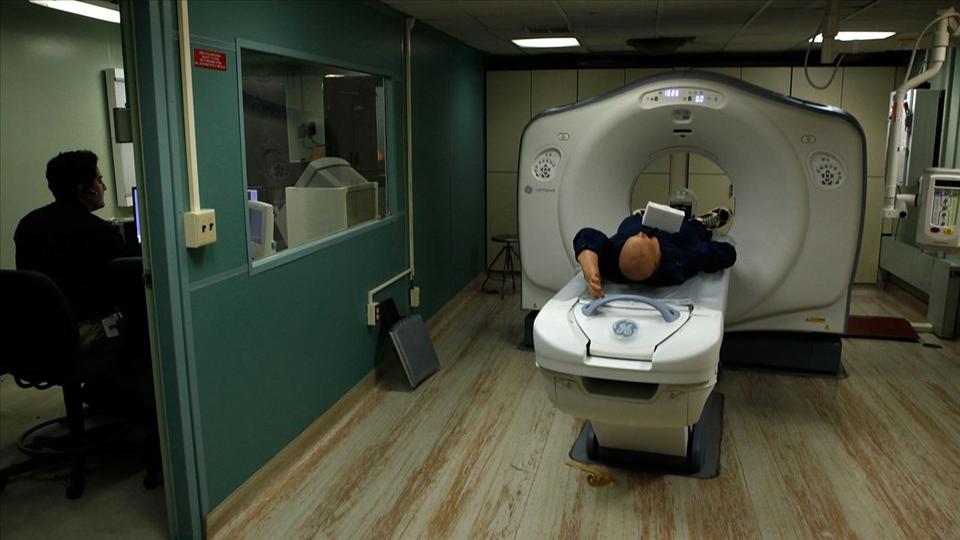Source: Thailand Medical News Dec 02, 2019 6 years, 1 month, 3 days, 14 hours, 6 minutes ago
As a result of a global
obesity epidemic with more people having larger body sizes and weights, the Russian NUST MISIS Engineering Center for Industrial Technologies together with Research and production company Magneton have developed a new Russian
MRI device capable of diagnosing patients weighing up to 250 kg. Up to now, this figure has been 120-150 kg. Another advantage of the Russian device for
magnetic resonance imaging is its low price, and hence its availability for state medical clinics.
 MRI
MRI or
Magnetic resonance imaging is one of the most effective diagnostic methods in modern medicine. With the help of a
magnetic resonance imaging scanner, cancer, multiple sclerosis, diseases of the musculoskeletal system and joints and others can be diagnosed in the early stages. The average cost of one analysis using
MRI is, depending on the region, from 4 to 12 thousand rubles (60-200 US dollars).
The actual mass of the developed magnetic system of the new
MRI device is almost 1.5 tons lower than that of foreign analogs with the same power (for comparison, the magnitude of the magnetic induction of 0.45 T was taken). At the same time, the air gap of the device, which determines its working area, is 7.5% more than that of existing analogs. By reducing the volume and weight of the magnetic system in the device, the space for research has increased. This will allow diagnosing patients weighing up to 250 kg.
As a result of values of magnetic field non-uniformity which are identical to competitive apparatuses, and, as a result, with comparable image quality, the developed design of the magnetic
MRI system can examine patient's bodies of 15% larger volume. This allows us to increase the area of the transmitted image by more than 12%, and also reduces the duration of the tomography process.
The heart of the invention is an innovative technology for producing magnetic materials and permanent magnets with a reduced cost, developed by materials scientists from NUST MISIS. The use of a permanent, rather than a superconducting magnet, as in most modern
MRI devices, can reduce the device operating costs by almost 1.5 million rubles (23 000 US dollars) a year.
Project manager, deputy director of the NUST MISIS Engineering Center for Industrial Technologies, Dr Evgeny Gorelikov told
Thailand Medical News via a phone interview, "We have developed an innovative technology for the production of hard magnetic materials and permanent magnets with low cost, made from alloys of domestic rare-earth metals and their compounds, including those obtained from the processing of industrial waste from magnetic production."
By using man-made wastes of magnetic production and cheap rare-earth metal alloys in the production of raw materials for permanent magnets, the developers were able to reduce their cost by almost 1.5 times.
Gorelikov explains "The use of new soft magnetic materials allowed us to develop a magnetic wire for the magnetic
system of the tomograph with a low level of loss while maintaining a high saturation magnetization (more than 2 T). This allowed to design and reduce the weight of the permanent magnets used in the construction of the magnetic system by almost 30%, which means to reduce both the weight and cost of the device."
The cryogenic technique, liquid nitrogen, liquid helium and water for cooling (as in the case of
MRI with superconducting magnets or electromagnets) will not be required to operate the new
MRI unit. The power consumed by this unique tomograph will be less than 1 kW, so it can be powered even from renewable energy sources, such as solar panels and wind generators.
The actual cost of the "new generation"
MRI analysis, according to developers, will be decreased by 50%. A prototype device was assembled at the plant of the Research and production company Magneton in Vladimir. According to the approximate calculations of the creators, it will be launched into mass production by late 2020.
Considering the growing number of
obese patients worldwide especially in countries like America, Germany, Britain, Australia and Russia, the demand for these new
MRI devices is expected to exceed expectations.
